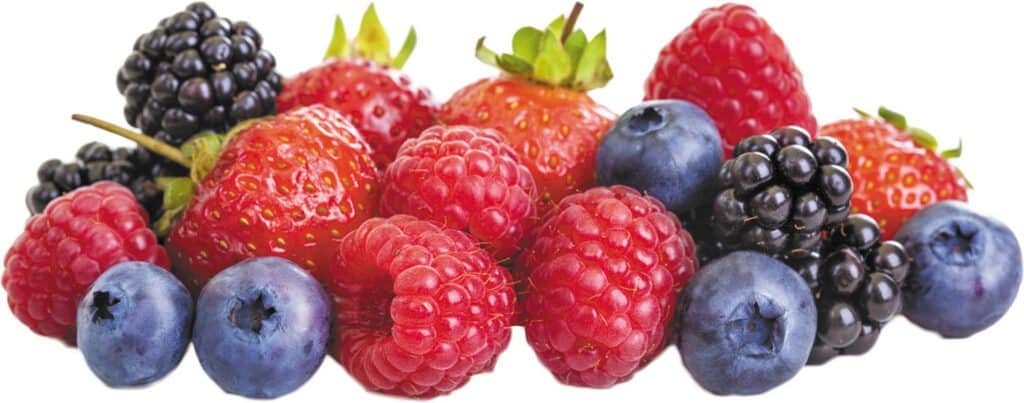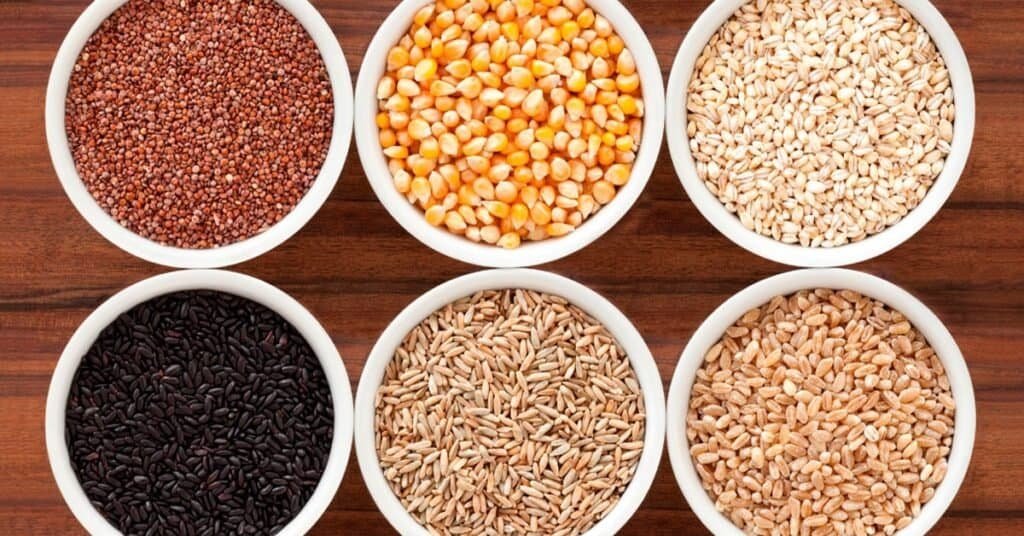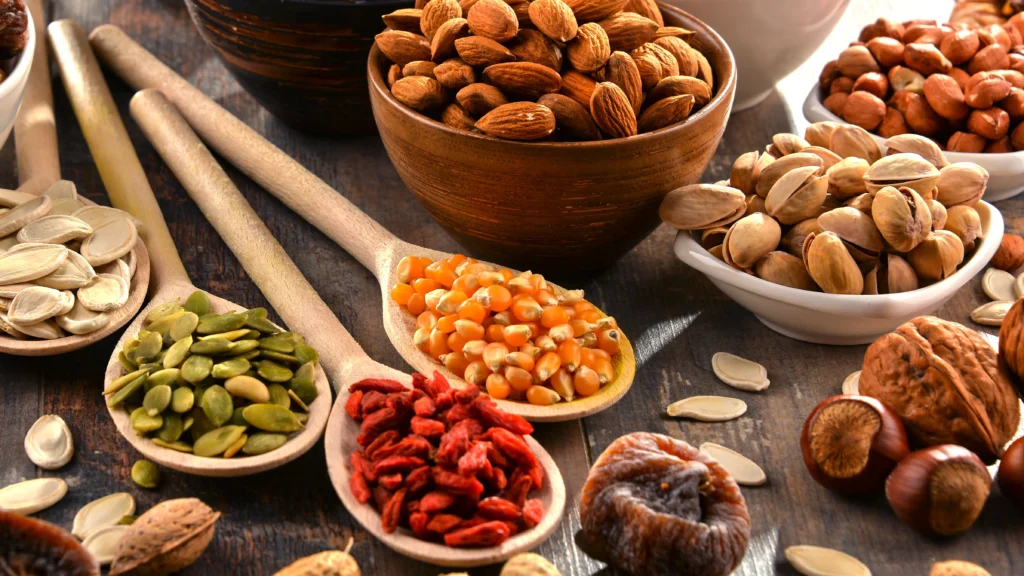Embarking on a weight loss journey is a commendable decision, but it can often be overwhelming to navigate the myriad of dietary advice available. One of the key components of successful weight loss is choosing the right foods that not only aid in shedding pounds but also nourish your body. In this comprehensive guide, we will explore the top 16 foods that can help fuel your fitness and support a healthy weight loss journey in 2024.
1. Leafy Greens
Leafy greens such as spinach, kale, and Swiss chard are incredibly nutrient-dense and low in calories. They are packed with vitamins, minerals, and fiber, which can help keep you full and satisfied. The high fiber content also aids in digestion and promotes a healthy gut.
How to Incorporate: Add leafy greens to salads, smoothies, or stir-fries.

2. Berries
Berries, including blueberries, strawberries, and raspberries, are rich in antioxidants, vitamins, and fiber. They have a low glycemic index, which means they won’t cause a spike in blood sugar levels. Berries are also naturally sweet, making them a great substitute for sugary snacks.
How to Incorporate: Enjoy berries as a snack, add them to yogurt, or blend them into smoothies.

3. Lean Protein
Lean proteins such as chicken breast, turkey, and tofu are essential for muscle repair and growth. Protein helps increase satiety, reducing overall calorie intake. It’s also crucial for maintaining muscle mass during weight loss.
How to Incorporate: Include lean protein in every meal, such as grilled chicken in salads or tofu in stir-fries.
4. Whole Grains
Whole grains like quinoa, brown rice, and oats are excellent sources of complex carbohydrates and fiber. They provide sustained energy and help regulate blood sugar levels. Whole grains also support digestive health and can keep you feeling full longer.
How to Incorporate: Replace refined grains with whole grains in your meals. For example, use brown rice instead of white rice or oats instead of sugary cereals.

5. Greek Yogurt
Greek yogurt is a great source of protein, probiotics, and calcium. The probiotics in Greek yogurt support a healthy gut microbiome, which is essential for digestion and overall health. The high protein content also helps in building and repairing muscles.
How to Incorporate: Enjoy Greek yogurt with fresh fruit and a sprinkle of nuts for a nutritious breakfast or snack.
6. Avocado
Avocados are rich in healthy fats, fiber, and various essential nutrients. The monounsaturated fats in avocados are heart-healthy and can help reduce bad cholesterol levels. They also promote satiety, which can prevent overeating.
How to Incorporate: Add avocado to salads, sandwiches, or make a delicious guacamole.

7. Nuts and Seeds
Nuts and seeds, such as almonds, chia seeds, and flaxseeds, are excellent sources of healthy fats, protein, and fiber. They provide a nutrient-dense snack option that can help curb hunger and cravings.
How to Incorporate: Enjoy a handful of nuts as a snack or sprinkle seeds on yogurt, oatmeal, or salads.

8. Eggs
Eggs are a fantastic source of high-quality protein and essential vitamins and minerals. They are also incredibly versatile and can be prepared in numerous ways. Studies have shown that eggs can help increase feelings of fullness and reduce calorie intake in subsequent meals.
How to Incorporate: Have eggs for breakfast, boiled, scrambled, or as an omelet with vegetables.
9. Legumes
Legumes, including beans, lentils, and chickpeas, are rich in protein, fiber, and essential nutrients. They are low in fat and can help regulate blood sugar levels. The high fiber content also aids in digestion and promotes satiety.
How to Incorporate: Add legumes to soups, stews, salads, or make a hearty bean-based dip like hummus.

10. Fatty Fish
Fatty fish such as salmon, mackerel, and sardines are rich in omega-3 fatty acids, which are essential for heart health. Omega-3s can help reduce inflammation and improve metabolic health. Fatty fish is also an excellent source of high-quality protein.
How to Incorporate: Aim to include fatty fish in your diet at least twice a week. Grill, bake, or steam fish for a healthy meal.
11. Sweet Potatoes
Sweet potatoes are a nutrient-dense carbohydrate source that provides vitamins, minerals, and fiber. They have a lower glycemic index compared to regular potatoes, which means they have a more gradual impact on blood sugar levels.
How to Incorporate: Bake or roast sweet potatoes as a side dish or use them as a base for a nutritious bowl.

12. Green Tea
Green tea is renowned for its antioxidant properties and potential weight loss benefits. It contains catechins, which are believed to boost metabolism and promote fat burning. Green tea also provides a gentle caffeine boost, which can enhance energy levels.
How to Incorporate: Enjoy a cup of green tea in the morning or as an afternoon pick-me-up.
13. Apples
Apples are a convenient and nutritious snack that provides fiber, vitamins, and antioxidants. The fiber in apples can help promote fullness and prevent overeating. They are also low in calories, making them an excellent choice for weight loss.
How to Incorporate: Enjoy apples as a snack, add slices to salads, or bake them for a healthy dessert.
14. Broccoli
Broccoli is a cruciferous vegetable that is low in calories and high in vitamins, minerals, and fiber. It also contains compounds that may help reduce inflammation and support overall health. The high fiber content can aid in digestion and promote satiety.
How to Incorporate: Steam or roast broccoli as a side dish, or add it to stir-fries and salads.

15. Quinoa
Quinoa is a gluten-free grain that is rich in protein, fiber, and essential amino acids. It provides sustained energy and can help keep you full for longer periods. Quinoa is also versatile and can be used in a variety of dishes.
How to Incorporate: Use quinoa as a base for salads, bowls, or as a substitute for rice in your favorite recipes.
16. Water
While not a food, staying hydrated is crucial for weight loss and overall health. Drinking water can help boost metabolism, reduce appetite, and improve digestion. Sometimes, thirst is mistaken for hunger, leading to unnecessary snacking.
How to Incorporate: Aim to drink at least 8 glasses of water a day. Carry a water bottle with you to stay hydrated throughout the day.

Creating a Balanced Diet
Incorporating these top 16 foods into your diet can significantly contribute to your weight loss journey. However, it’s essential to create a balanced diet that includes a variety of nutrients from different food groups. Here are some tips for creating a balanced diet:
- Variety: Ensure your meals include a variety of foods to provide a wide range of nutrients.
- Portion Control: Be mindful of portion sizes to avoid overeating, even with healthy foods.
- Meal Planning: Plan your meals and snacks ahead of time to make healthier choices and avoid impulsive eating.
- Mindful Eating: Pay attention to your hunger and fullness cues and avoid eating out of boredom or stress.
- Limit Processed Foods: Minimize the intake of processed and sugary foods, which can hinder your weight loss efforts.
Conclusion
Fueling your fitness and achieving a healthy weight loss journey in 2024 is attainable with the right dietary choices. By incorporating these top 16 foods into your diet, you can support your weight loss goals while nourishing your body with essential nutrients. Remember, consistency and balance are key to long-term success. Pair these healthy food choices with regular physical activity and a positive mindset to enjoy a healthier, happier you.
Keywords: weight loss, healthy foods, fitness, leafy greens, berries, lean protein, whole grains, Greek yogurt, avocado, nuts and seeds, eggs, legumes, fatty fish, sweet potatoes, green tea, apples, broccoli, quinoa, hydration, balanced diet, 2024.
